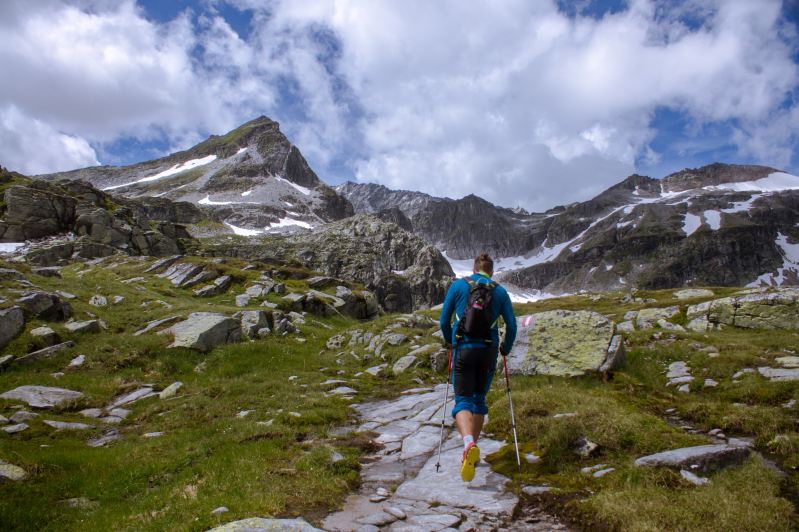Some of the most gorgeous places on the planet require you to hike to high elevations. Many of the trailheads at the Rockies, for example, start at elevations higher than 5,000 feet. As you start to ascend, you might feel pressure in your head. Could this be the beginning of altitude sickness? Can you get altitude sickness at 5,000 feet?
While most cases of altitude sickness occur at much higher altitudes, it’s worth considering whether you are at risk at a lower elevation. In this article, we’ll explore the likelihood of experiencing altitude sickness at 5,000 feet and what you can do to prevent discomfort.
Why 5,000 feet is unlikely for altitude sickness

Altitude sickness, or acute mountain sickness (AMS), occurs when the body struggles to adapt to lower oxygen levels at higher altitudes. Common symptoms include headaches, shortness of breath, nausea, dizziness, and fatigue. These symptoms usually show up past 8,000 feet of elevation. Here, the air is thinner, so the amount of oxygen available is also less than what you might be used to.
The thing is, at 5,000 feet, the oxygen levels are only slightly reduced compared to sea level, so most people don’t have an issue until at least 8,000 feet. That said, 5,000 feet could still trigger similar symptoms, especially if you have not been at high altitudes before.
The time it takes to acclimate to high altitude varies based on your rate of ascent, starting altitude, and your overall fitness. In altitudes of around 8,000 to 10,000 feet, it usually takes about two to three days to become fully adjusted. During this period, you will breathe more and your heart rate will increase, boosting red blood cell production.
If your trip involves going 12,000 to 14,000 feet, acclimation will take you a couple of weeks. And if you’re going above that, like for a Mount Everest expedition, it could take you several weeks to months to fully acclimatize.
Factors that could cause altitude sickness symptoms at 5,000 feet

Individual sensitivity
Some people are more sensitive to altitude changes than others, regardless of how moderate the elevation might be. If you happen to be more sensitive to elevation changes or have a history of it, listen to your body and don’t push yourself further than you should.
Rapid ascent
Traveling quickly from sea level to 5,000 feet could also cause mild symptoms, so if you fly from sea level to a place like the Rocky Mountains, make sure you acclimate for a day or two before you start your hike. That way, your body will be ready for your adventures.
Underlying health conditions
If you have pre-existing respiratory conditions such as asthma, you might find 5,000 feet to be more challenging than others. Also, alcohol or drug addictions can greatly increase your chances of developing altitude sickness.
How to prevent altitude sickness symptoms at 5,000 feet

Even though altitude sickness is unlikely at 5,000 feet, it’s always a good idea to take precautions. Here are some ways that you could mitigate the negative effects of altitude sickness.
- Stay hydrated: Dehydration can mimic some of the symptoms of altitude changes, so drinking plenty of water can help you determine whether you’re actually experiencing altitude sickness.
- Take it easy on the way up: Avoid overexerting yourself, especially on the first day. Your body will need time to adjust to the moderate elevation change, and you could risk injury if you push yourself too far too fast. Experts recommend that you ascend no more than 1,000 feet per day, so factor that into your plans.
- Sleep at a lower altitude: It’s not always possible, but if your trip allows it, descend to a lower altitude when it’s time to sleep. This will give your body a break from the changes, and it could help with the fatigue.
- Eat carbohydrate-rich meals: Some say that eating light, carbohydrate-rich meals can help maintain your energy levels and reduce feelings of sluggishness. Since carbs are easier to digest, your body will convert this food into the energy you need to scale those mountains. A loss of appetite is actually common in the mountains, but not eating at all can increase your chances of altitude sickness.
- Have medication on hand: Before you go on your hiking trip, consult your doctor about medications like Diamox, which are often used to help you acclimate to higher altitudes. It’s generally unnecessary for a hiking trip at 5,000 feet, but it could be useful if you are sensitive to altitude changes.
If you start to experience altitude sickness, it’s important that you don’t ignore the symptoms. Avoid going higher until your symptoms improve or completely resolve, or even descend for periods of time. Don’t drink alcohol or use any sedatives, such as sleeping pills, which can slow down your breathing and further reduce the oxygen levels in your body.
While altitude sickness is rare at 5,000 feet, some people may experience mild, temporary symptoms. But for most travelers, adjusting to this elevation won’t be a problem. Focus on gradual acclimation, hydration, and pacing yourself. And most importantly, if you start experiencing any unusual symptoms, have a backup plan for safety.




